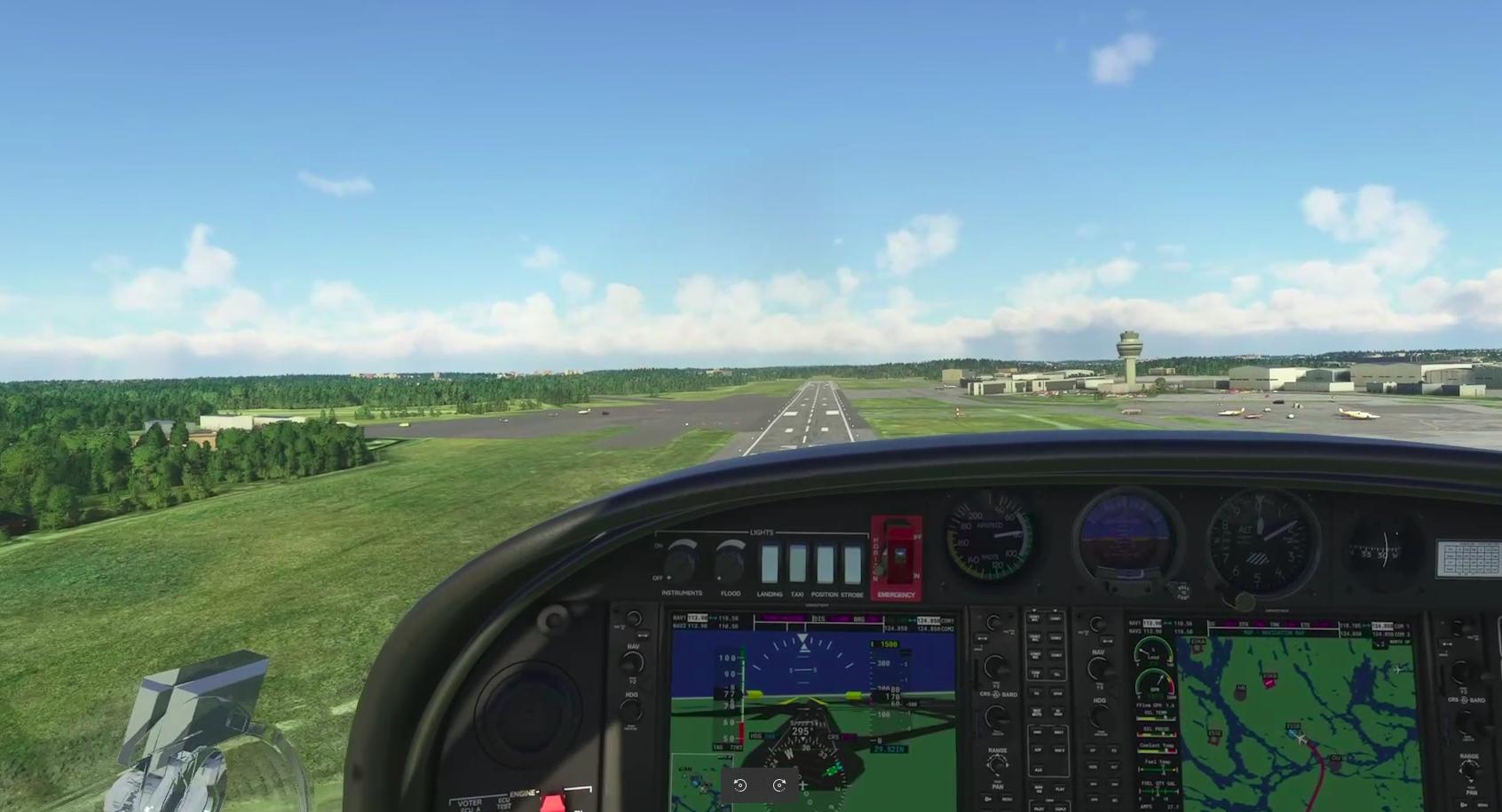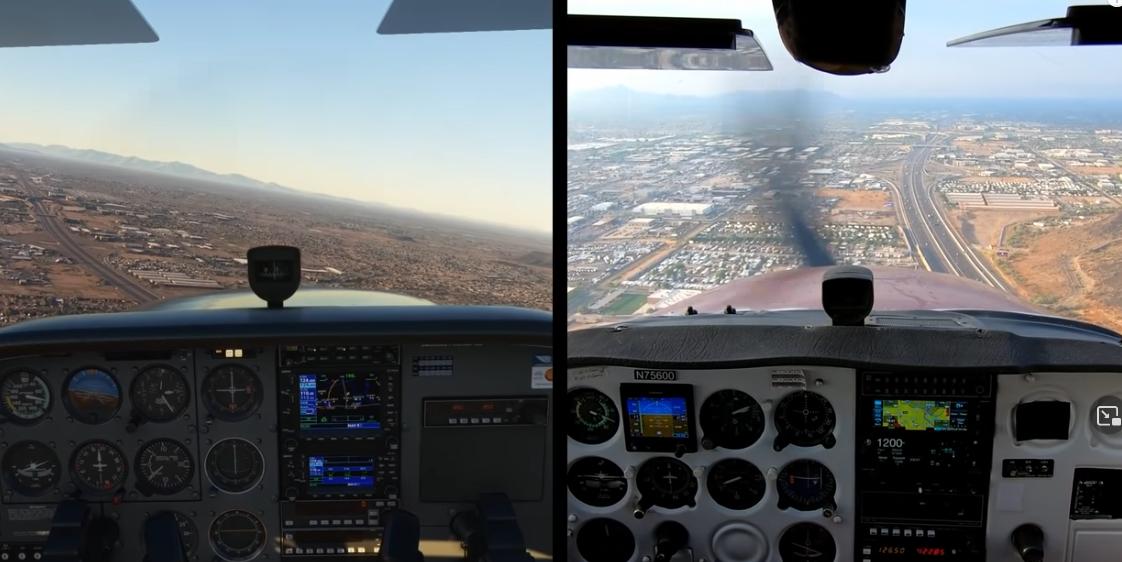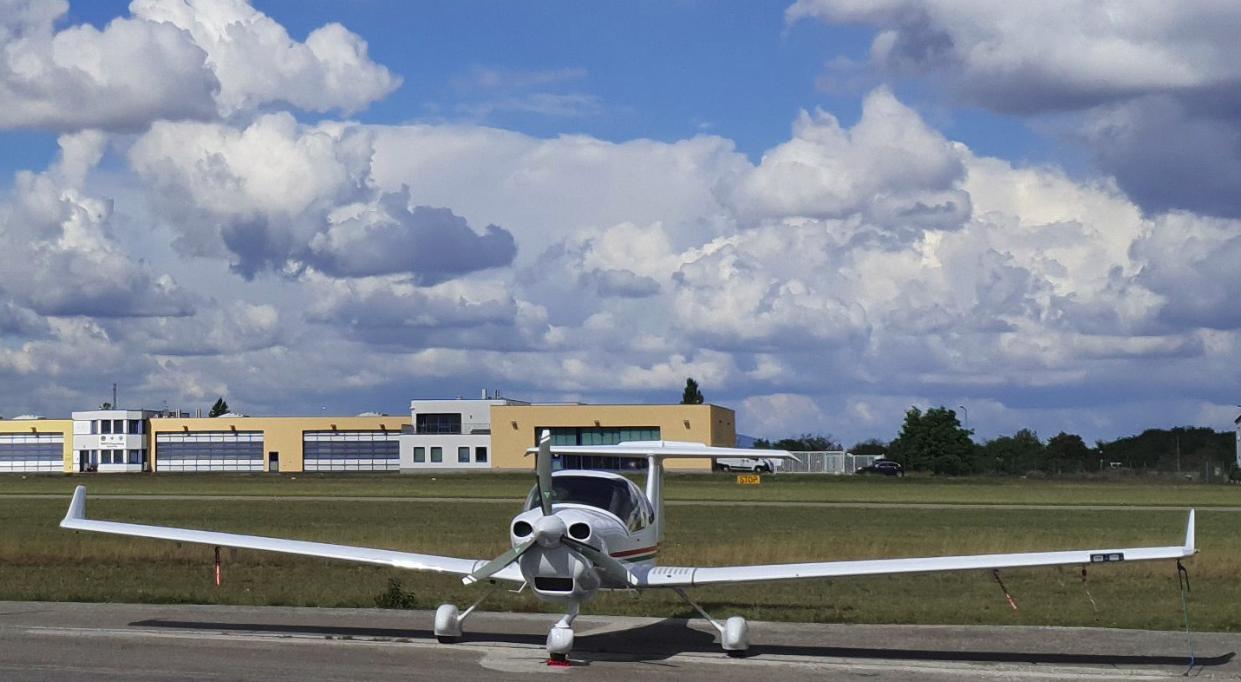
I’ve had a fascination for flying pretty much for as long as I can remember and some years ago, I bought my first book that taught me the theoretical knowledge required for a private pilot license. But for a number reasons, flying a small airplane in reality hasn’t been in the cards so far. Also, I was not very interested in exploring the possibilities of a flight simulator, so the dream remained a reading exercise. However, several things have changed my mind about flight simulators recently.
What Has Changed My Mind
Earlier this year, I had an interesting experience in a virtual reality adventure at the Miniatur Wunderland in Hamburg. Despite the VR googles and being visually and consciously aware that this virtual world is just a simulation, my subconsciousness would not let me do some things, like walking on a plank that was high in the air. Not a perfect simulation of a world, but close enough to make it feel very real. Then, a couple of months later, I watched a stream on Twitch by someone flying a plane in MS Flight Simulator 2020, and I was amazed how realistically flight simulators now render the physical world. So knowing that a flight simulation would never get me the same experiences as real flying, I nevertheless started to wonder how far it would take me.
Hardware Requirements
To get as much realism as possible, one needs a pretty strong PC with a high end GPU. However, from a graphical point of view, an XBox X-series for around 600 euros will do pretty much the same. Since the later option was far cheaper than a high end PC, I decided to go for that option first, plus a Thrustmaster control stick, throttle and rudder pedals.
It’s Still a Simulation
Obviously, flying in a simulator is not the same as flying in the real world. But many aspects come quite close. Out of the box, planes in MS Flight Simulator 2020 can be flown pretty much with two fingers and the arrow keys. Not very realistic. But when switching off all assistants, including the auto-rudder, things become very different. The built-in tutorials are a good first step to get started for real and after a couple of hours, one has learnt the basic things to get a plane into the air and land it again somewhat realistically. While that gives one a first idea, it’s still far away from flying in the real world. However, one can go further, much further!
Before talking about how I personally went further to explore the topic in great detail in the past months, a couple of words what one can’t experience in the simulator: External forces! One doesn’t feel acceleration in any dimension, and there is also no back-pressure on the yoke/control stick or the rudder and brake pedals. That makes a number of things much more difficult in the simulator compared to the real world, because one can’t react on this feedback. Instead, one has to rely more on the instruments and one also needs to focus more on the visual feedback from ‘looking out of the window’. Also, looking around as well as looking up and down from the pilots perspective is not as easy as in the real world.
As Realistic as Possible

Apart from these limitations, one can fly in the simulator just like in the real world and it looks very real. There are videos on Youtube that show virtual and real flights and landings side by side in case you want to have a look for yourself. In the simulator, however, one can break all the rules without any consequences. And if you just stick to the built-in tutorials, you probably break half a dozen real world flying rules every 10 minutes without even noticing. In some cases, that might actually be desired. In the real world, for example, there is usually a ‘no fly zone’ over many capitals, so there’s little chance you will ever circle the real Eiffel Tower in Paris with your small airplane or the real Colosseum in Rome. No problem in the simulator, nobody will stop you from doing that. While this is great fun, this is one of the very few exceptions I have chosen to make. Otherwise I want the experience to be as realistic as possible.
Among many things, flying a small airplane as realistically as possible in the simulator is to know about where you can fly, where you must not fly, which airspace requires permission to fly into and from where, how to talk to air traffic control, how to fly traffic patterns at airports, how to navigate from dead reckoning all the way to using the plane’s GPS system, how to deal with the weather and clouds, how to avoid other planes, who has the right of way and when, how to find your way around airports and talk to the ground controller, how much fuel you need for a trip, how to file a flight plan, how to deal with stalls and spins, emergency procedures, checklists, weight and balance of the aircraft, the performance of the plane on short runways, on grass runways or on wet or snowy runways based on its weight and balance, temperature, altitude, etc, etc. In the simulator, you don’t need to know most of these things if you don’t want to, because you don’t die when things go wrong. But all of these things can be nicely incorporated when flying in the simulator, including the external and internal pre-flight check, only flying to airports during their opening times and only flying to airports that have the type of fuel available that your aircraft needs.
Choosing the Right Flight Simulator
There are several fantastic flight simulators out there, and as I wanted to have the most realistic terrain experience, I chose MS Flight Simulator 2020 after looking at a couple of comparisons on Youtube. In addition to the awesome terrain models, it’s possible to fly in real time and in real weather! The simulator picks up global weather forecasts and uses them to model air pressure, wind, clouds, temperature, rain, etc. etc. at any location on the planet. I like to fly as much as possible in real time and with real weather, but the second exception I make when it comes to realism is taking the liberty of dialing back time to fly earlier in the day when I only have time in the evening. And if the weather is too bad to fly that day at a particular location, I take the liberty to create my own weather. Reality just takes me that far.
Flying Small Planes in the Simulator And How to Learn the Trade

Ever since I picked up this activity half a year ago, I’ve been on a tour all across Europe, from one airport to the next with a Diamond DA40 NG and have been learning new things along the way on a daily basis. While that can be done in reality, time and money would not permit anyone but a few to do this. So how does one go about flying as realistically as possible in the simulator? The answer is actually straight forward: One looks at how people do it in the real world and consults online and offline resources. There’s tons of information out there on the topic and in the next episodes, I’ll describe how and what I’ve done it so far and which sources I found particularly useful.
Hi Martin,
We seem to have similar topics of interests… Simulation accuracy is relative: while MSFS seems to have an amazingly realistic simulation of the outside world and commercial aircraft, DCS is imho much better for fighter plane simulation – used by the US Air Force and French Armée de l’Air, among others, to train their own pilots. Might be worth giving it a (free) try.
Best regards,
Thierry
Hi Thierry,
it’s been a while! Thanks for commenting on my blog 🙂
>fighter plane simulation
Not quite my thing, I like the peaceful world a lot better. But thanks for the tip 🙂
Kind regards,
Martin